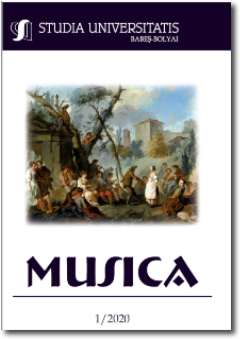MUSIC IN THE PSALM SUPERSCRIPTIONS
MUSIC IN THE PSALM SUPERSCRIPTIONS
Author(s): János MolnárSubject(s): Music
Published by: Studia Universitatis Babes-Bolyai
Keywords: -SIR; MIZMÓR; MIKTÁM; MASZKIL; TÖHILLÁH; TÖFILLÁH; SIGGÁJON; melody; stringed instrument; low pitch; soprano; SZELÁH;
Summary/Abstract: In this paper we study the superscriptions of the Psalms, especially those indications of genre and music that are phonetically transcribed in the Bible translations. Following the introduction, the study is divided into 3 sections. The first section provides some important information on the cult and musical role of the superscriptions: how they were created, what is their role, and why some Psalms have superscriptions, while others don’t. The second part etymologically and semantically explores those superscriptions, which, apart from genre, also indicate the way of musical performance, the instrumental accompaniment and the role of music next to singing, in general. A total of seven Hebrew concepts are explored concerning their meaning and etymology. The third part deals with superscriptions indicating musical performance and melody. Before going into a detailed analysis of each concept, however, the meaning of the term LAMÖNACÉAKH is presented. This concept is included in the superscription of 55 Psalms and is translated by Károli with the term “the director of music” each time. This is followed by an analysis of 10 concepts that are specifically related to the melody material, i.e. music. In which tone and accompanied by which instruments should the Psalm be performed, and to the melody of which other song should each be sung. The study concludes by discussing the etymology of the musical term SZELÁH. This musical symbol is not found in the superscriptions, but in the main text of the Psalms.
Journal: Studia Universitatis Babes-Bolyai - Musica
- Issue Year: 65/2020
- Issue No: 1
- Page Range: 123-136
- Page Count: 14
- Language: English

